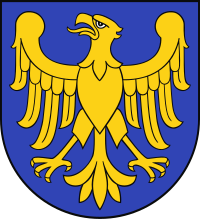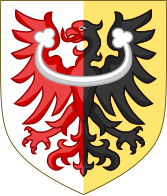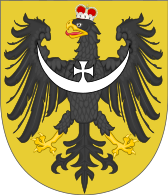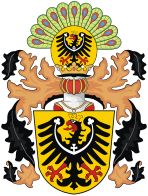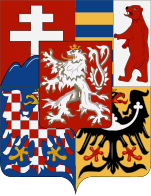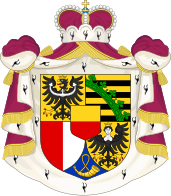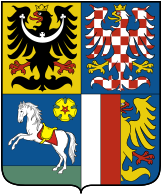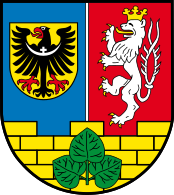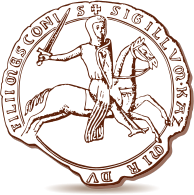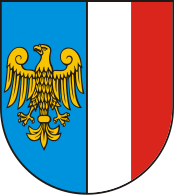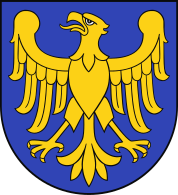
Silesia is a historical region of Central Europe that lies mostly within Poland, with small parts in the Czech Republic and Germany. Its area is approximately 40,000 km2 (15,400 sq mi), and the population is estimated at 8,000,000. Silesia is split into two main subregions, Lower Silesia in the west and Upper Silesia in the east. Silesia has a diverse culture, including architecture, costumes, cuisine, traditions, and the Silesian language. The largest city of the region is Wrocław.
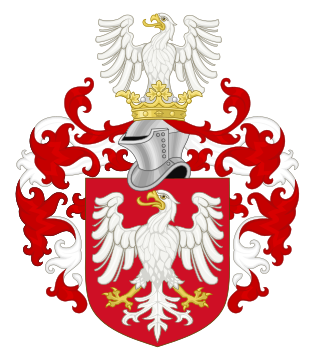
The House of Piast was the first historical ruling dynasty of Poland. The first documented Polish monarch was Duke Mieszko I. The Piasts' royal rule in Poland ended in 1370 with the death of King Casimir III the Great.

Upper Silesia is the southeastern part of the historical and geographical region of Silesia, located today mostly in Poland, with small parts in the Czech Republic. The area is predominantly known for its heavy industry.
The Duke of Silesia was the sons and descendants of the Polish Duke Bolesław III Wrymouth. In accordance with the last will and testament of Bolesław, upon his death his lands were divided into four or five hereditary provinces distributed among his sons, and a royal province of Kraków reserved for the eldest, who was to be High Duke of all Poland. This was known as the fragmentation of Poland. Subsequent developments lead to further splintering of the duchies.

Lubliniecpronounced[lubˈliɲet͡s] is a town in southern Poland with 23,784 inhabitants (2019). It is the capital of Lubliniec County, part of Silesian Voivodeship ; previously it was in Częstochowa Voivodeship (1975–1998).
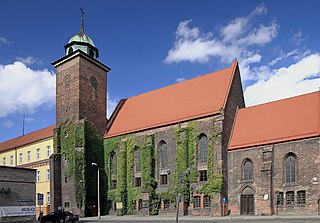
Racibórz is a city in Silesian Voivodeship in southern Poland. It is the administrative seat of Racibórz County.

The Duchy of Teschen, also Duchy of Cieszyn or Duchy of Těšín, was one of the Duchies of Silesia centered on Cieszyn in Upper Silesia. It was split off the Silesian Duchy of Opole and Racibórz in 1281 during the feudal division of Poland and was ruled by Silesian dukes of the Piast dynasty from 1290 until the line became extinct with the death of Duchess Elizabeth Lucretia in 1653.

In the second half of the 2nd millennium B.C., Silesia belonged to the Lusatian culture. About 500 BC Scyths arrived, and later Celts in the South and Southwest. During the 1st century BC Silingi and other Germanic people settled in Silesia. For this period we have written reports of antique authors who included the area. Slavs arrived in this territory around the 6th century. The first known states in Silesia were those of Greater Moravia and Bohemia. In the 10th century, Mieszko I incorporated Silesia into Civitas Schinesghe, a Polish state. It remained part of Poland until the Fragmentation of Poland. Afterwards it was divided between Piast dukes, descendants of Władysław II the Exile, High Duke of Poland.

The Duchy of Silesia with its capital at Wrocław was a medieval duchy located in the historic Silesian region of Poland. Soon after it was formed under the Piast dynasty in 1138, it fragmented into various Silesian duchies. In 1327, the remaining Duchy of Wrocław as well as most other duchies ruled by the Silesian Piasts passed to the Kingdom of Bohemia as Duchies of Silesia. The acquisition was completed when King Casimir III the Great of Poland renounced his rights to Silesia in the 1335 Treaty of Trentschin.

Lower Silesia is a historical and geographical region mostly located in Poland with small portions in the Czech Republic and Germany. It is the western part of the region of Silesia.

The Duchies of Silesia were the more than twenty divisions of the region of Silesia formed between the 12th and 14th centuries by the breakup of the Duchy of Silesia, then part of the Kingdom of Poland. In 1335, the duchies were ceded to the Kingdom of Bohemia under the Treaty of Trentschin. Thereafter until 1742, Silesia was one of the Bohemian crown lands and lay within the Holy Roman Empire. Most of Silesia was annexed by the King of Prussia under the Treaty of Berlin in 1742. Only the Duchy of Teschen, the Duchy of Troppau and the Duchy of Nysa remained under the control of the Bohemian crown and as such were known as the Duchy of Upper and Lower Silesia until 1918.

The Silesian Piasts were the elder of four lines of the Polish Piast dynasty beginning with Władysław II the Exile (1105–1159), eldest son of Duke Bolesław III of Poland. By Bolesław's testament, Władysław was granted Silesia as his hereditary province and also the Lesser Polish Seniorate Province at Kraków according to the principle of agnatic seniority.

The Principality of Opava or Duchy of Troppau was a historic territory split off from the Margraviate of Moravia before 1269 by King Ottokar II of Bohemia to provide for his natural son, Nicholas I. The Opava territory thus had not been part of the original Polish Duchy of Silesia in 1138, and was first ruled by an illegitimate offshoot of the Bohemian Přemyslid dynasty, not by the Silesian Piasts like many of the neighbouring Silesian duchies. Its capital was Opava (Troppau) in the modern-day Czech Republic.
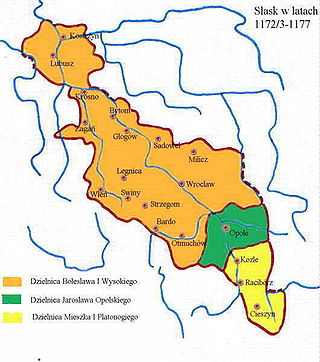
Duchy of Opole was one of the duchies of Silesia ruled by the branch of Polish Piast dynasty. Its capital was Opole in Upper Silesia.

Duchy of Jawor was one of the Duchies of Silesia established in 1274 as a subdivision of the Duchy of Legnica. It was ruled by the Silesian Piasts, with its capital at Jawor in Lower Silesia.

The Duchy of Krnov or Duchy of Jägerndorf was one of the Duchies of Silesia, which in 1377 emerged from the Duchy of Troppau (Opava), itself a fief of the Bohemian Crown. Its capital was at Krnov in the present-day Czech Republic.
Leszek of Racibórz was a Duke of Racibórz since 1306 and Duke of Koźle from 1334 until his death.

The Duchy of Opole and Racibórz was one of the numerous Duchies of Silesia ruled by the Silesian branch of the royal Polish Piast dynasty. It was formed in 1202 from the union of the Upper Silesian duchies of Opole and the Racibórz, in a rare exception to the continuing feudal fragmentation of the original Duchy of Silesia.

The coat of arms, that serves as the symbol of the Opole Voivodeship, Poland, features a yellow (golden) eagle wearing a yellow (golden) crown, placed on a blue background. It was adopted in 2001.
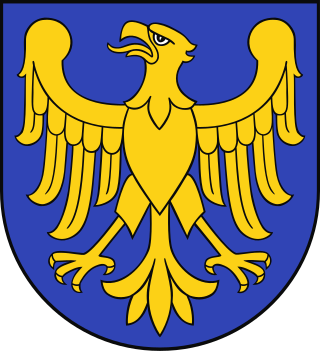
The coat of arms, that serves as the symbol of the Silesian Voivodeship, Poland, features a yellow (golden) eagle on a blue background. The current version of the coat of arms was adopted in 2001, and based on the historical coats of arms of Upper Silesia.

